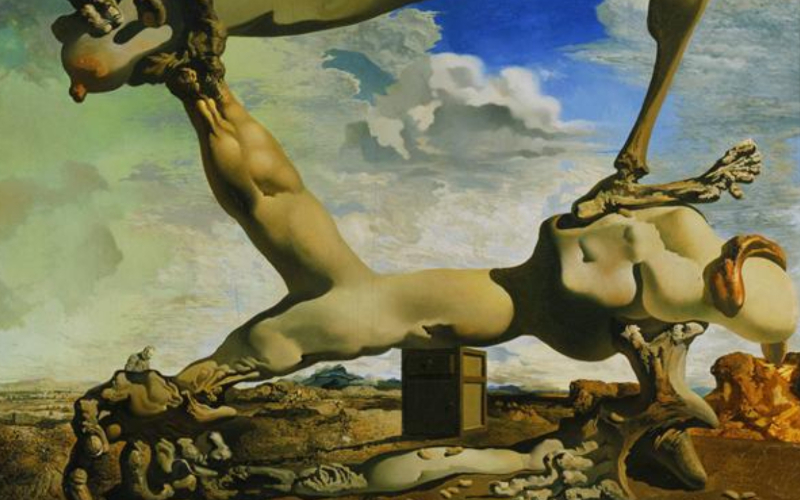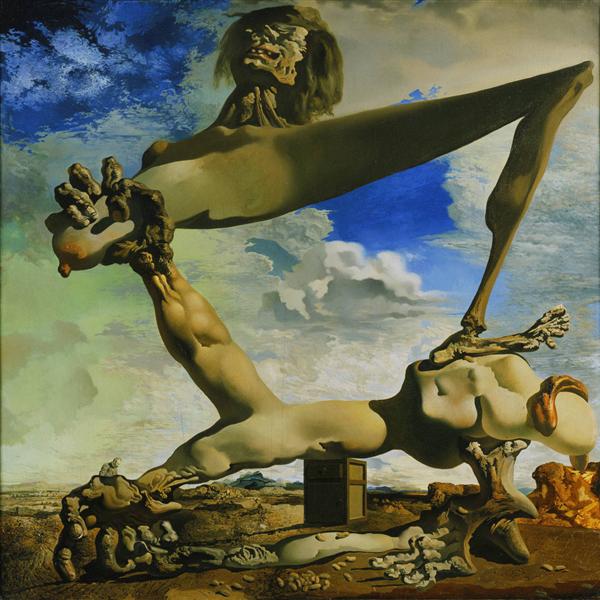Salvador Dali’s painting Soft Construction with Boiled Beans (Premonition of Civil War) from 1936 is a prime example of surrealism.
Dali painted the picture just six months before the Spanish Civil War broke out in order to depict the horrors of that struggle.
Later, he asserted that he knew the war would break out long before it did and used his own work as proof of “the prophetic power of his subconscious mind.” Although it is not totally certain, some have hypothesized that Dal may have changed the painting’s name after the conflict to underline his prophecies.
In his biography of Goya, the art historian Robert Hughes made the following observation regarding Dali’s painting: “Salvador Dalí appropriated the horizontal thigh of Goya’s crouching Saturn for the hybrid monster in the painting Soft Construction with Boiled Beans, … which—rather than Picasso’s Guernica—is the finest single work of visual art inspired by the Spanish Civil War.”
Painting Description
The oil on canvas painting can be found in the Philadelphia Museum of Art. Although Dal painted it in 1936, there are studies from the year 1934.
In 1934, Dali and his wife Gala were caught in the middle of a general strike and an armed uprising by Catalan separatists in Catalonia. This experience may have influenced Dal’s use of the Spanish Civil War motif.
Gala and Salvador made their way to Paris, where they got married.
Dali and Gala had hired an escort to transport them safely to Paris, but due to the strains of the Spanish Civil War, the escort passed away on his way home.
Dali eventually made it back home, but the war had damaged his Port Lligat home.
His buddy Federico Garca Lorca was killed in battle, and his sister Ana Maria was imprisoned and subjected to torture, all of which had a significant impact on him.
Meaning
The devastation caused by the Spanish Civil War is depicted in this picture. Like a Civil War, the hideous beast in this artwork is self-destructive.
Although Dali had many reasons to pick a side in the Spanish Civil War, it is not what this picture is trying to convey. His close friend from art school, poet Federico Garcia Lorca, was killed by a fascist firing squad, while communist forces fighting for the Republic tortured and imprisoned his sister.
Dali also added a lot of realism to this picture while yet including strange ideas.
Even if humans do not have the potential to resemble the creatures in this painting, it nonetheless has a realistic sense, which serves to underscore the seriousness of the concepts it represents.
In addition to bringing elements of tradition to this work, Dali contrasted the notion of revolution with a stunning Catalan sky. This picture features a huge number of boiled beans. One can’t picture ingesting all that unconscious meat without the presence of some mealy and depressing vegetable, Dali is reported as saying, which is why he added boiled beans.
He meant by this that because of the numerous hardships brought on by the conflict, Spanish residents had to make every effort to handle their issues. He played with themes of love, eating, and the war and how they are all related.



